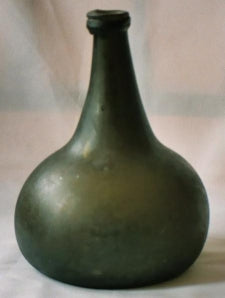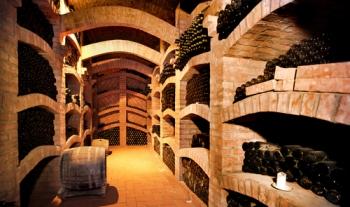Back in the days of Mesopotamian and Egyptian winemaking, the winemakers stored their wines in clay flacks. These were stamped with the vineyards name and vintage (just like they do today).
This went on for over 1,000 years, through the Grecian wine trade until the Romans grew to power. To begin with, the Romans drank little wine, but in later years they became heavy drinkers which led to wine festivals. There was also a strong connection between wine and religion too.
When their empire collapsed they embraced Christianity and early missionaries carried the vine into northern Europe. They needed sacramental wines, so sensibly wherever they built a church or abbey they planted a vineyard!
The Romans, amongst other things, developed glass blowing. This was found to be the perfect medium for storing wine as it did not affect the wine and had the advantage of clearly showing what was inside - white, rose, red. It was still difficult to store these early glass wine bottles in significant quantities because they could not be laid down in a wine rack.
The invention of wine racks could not occur until glass production became more advanced.
The trouble was glass at the time was hand-blown and bottles varied in size and shape so it would be impossible to make a standardised wine rack. Consumers never knew exactly how much wine they were getting in these early wine bottles; too easy to cheat!

For centuries it was illegal to sell wine in bottles because of this problem. This led to consumers bringing their own containers and measuring the amount they required for themselves.
In the fullness of time, coloured glass in various shapes and sizes came into existence. These were originally onion shaped as they were easy to blow, but it was found that longer, elongated shapes were better for storing the wine on its side, "laying down", which helped it age properly and kept the cork wet. For centuries it was illegal to sell wine in bottles because of this problem. This led to consumers bringing their own containers and measuring the amount they required for themselves.
Now the wine rack could be invented to allow easy storage of these wine bottles (just like the RakaStaka wine rack today). Wine racks were developed to fit the cellars of the winemakers so that the maximum number of bottles could be laid down.
The great advantage of this universally embraced shape was its adaptability to even the most confined situations. By stacking one bottle on top of the other every inch of space could be utilized, not only in the Grand Chateaux of Burgundy, Bordeaux and the cellars of New World winemakers but in modest households where space is at a premium. Nowhere is this more evident than in today's domestic fridges. Few cater for wine, other than the odd bottle, in the way they do for everyday staples like milk and juices. The revolutionary RakaStaka wine rack was created with this in mind. When space is at a premium, the RakaStaka wine racks prove themselves to be the world's most compact and versatile wine rack system.

The RakaStaka wine racks fill the gap between chateaux and domestic wine storage. The basic RakaStaka wine rack unit can be used anywhere around the home - in union with other RakaStaka wine racks to build a safe and secure wine storage area, or as a single wine rack in the refrigerator, to chill down the white and rose wines.
